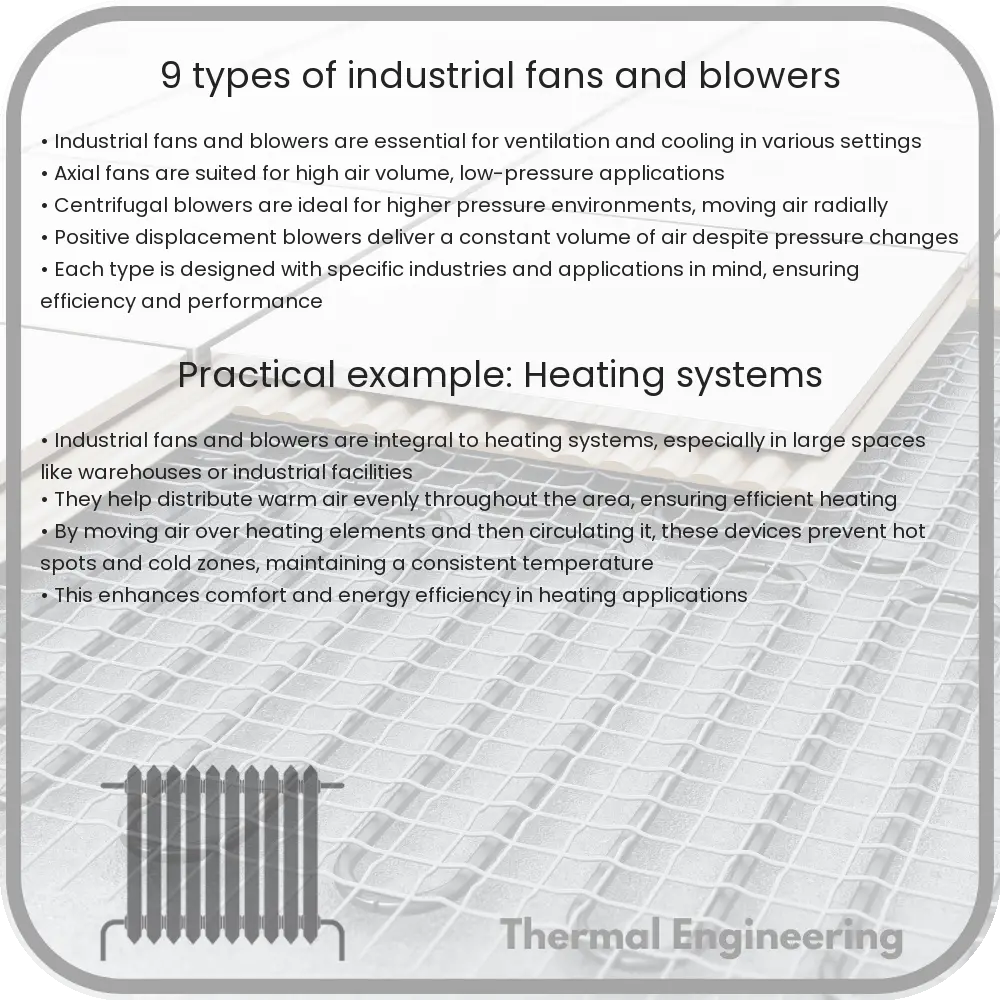Learn about the various types and uses of industrial fans and blowers, essential for multiple applications in various industries.

Introduction to Industrial Fans and Blowers
Industrial fans and blowers are essential components in various industrial applications, facilitating air movement and system ventilation. They play crucial roles in cooling, exhaust systems, and air supply in many sectors, including manufacturing, automotive, and construction. Understanding the different types can help in selecting the right equipment for specific industrial needs.
Centrifugal Fans
Centrifugal fans use a rotating impeller to increase the speed and volume of an air stream, which is then directed at a right angle to the fan’s intake. They are characterized by their radial discharge and are commonly used in situations where both flow and higher pressures are needed.
- Backward Inclined Fans: Ideal for applications requiring high-efficiency and low noise operations. These fans are suited for clean air applications.
- Forward Curved Fans: Also known as squirrel cage fans, they are typically used in heating and air conditioning systems due to their ability to move large volumes of air at low pressures.
- Radial Blade Fans: These are robust and can handle heavy dust loads. They are typically used in industries involving wood, metal, and other material handling that can result in debris being entrained in the airstream.
Axial Fans
In axial fans, the airflow is directed along the axis of rotation, allowing the air to move parallel through the impeller at all points. These are generally used for applications where a large volume of air needs to be moved across lower pressure differences.
- Tube Axial Fans: Common in industrial and commercial settings, they are well-suited for moving air or gases through ducts, as in ventilation systems.
- Vane Axial Fans: Similar to tube axial fans but with the addition of guide vanes that improve efficiency by straightening the airflow post-impeller rotation, minimizing turbulence.
- Propeller Fans: Often found in agricultural applications for barn ventilation or in industrial settings for basic ventilation or cooling. These fans move a high volume of air at low pressure but are not suitable for ducted applications.
Specialized Blowers
Blowers are designed for applications requiring a relatively low airflow compared to the high static pressure they can providing. They are crucial in pneumatic conveying, vacuum loaders, and other industrial processes requiring effective high-pressure airflow.
- Positive Displacement Blowers: These deliver a steady volume of air at varying pressures, suitable for operations demanding consistent airflow, like wastewater treatment facilities.
- High-Pressure Blowers: Specifically designed to achieve higher pressures than typical centrifugal blowers; used in systems demanding high-pressure airflow such as combustion applications.
- Rotary Blowers: Operating on the principle of positive displacement, these are used for applications requiring constant speed and flow. They are ideal for vacuum or compressed air systems.
Choosing the Right Fan or Blower
Selecting the right type of fan or blower depends on various factors such as application needs, desired airflow and pressure specifications, environmental conditions, and efficiency requirements. Understanding the specific operations and limitations of each type can aid in choosing the most appropriate model to enhance system performance and reliability.
Conclusion
Industrial fans and blowers are pivotal in maintaining air quality, temperature, and pressure in numerous industrial contexts. With the diverse types available, each tailored for different applications and specifications, businesses can optimize their processes by selecting the appropriate fans and blowers tailored to their specific needs.